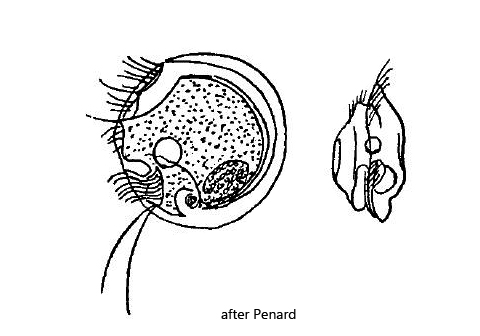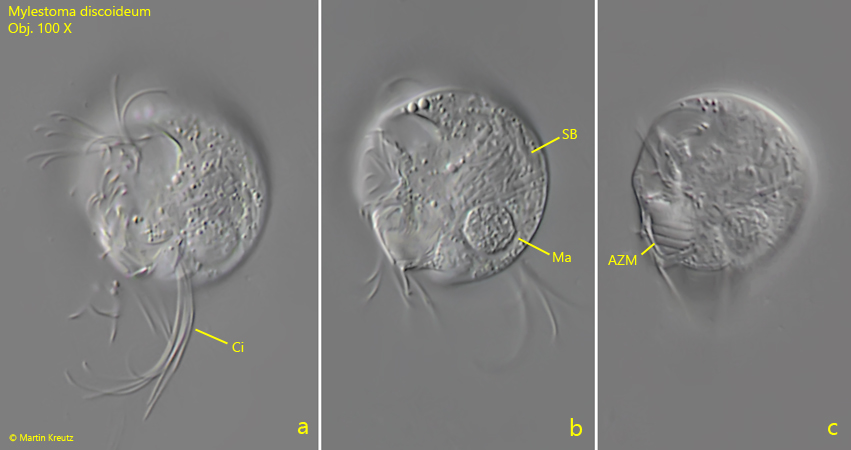Mylestoma discoideum (Penard, 1922)
Most likely ID: n.a.
Synonym: n.a.
Sampling location: Simmelried
Phylogenetic tree: Mylestoma discoideum
Diagnosis:
- body almost circular, laterally flattened
- ventrally somewhat angular shaped
- length 20–38 µm
- pellicle armour-like
- two long posterior cirri behind oral apparatus on left side
- without spines
- single macronucleus and micronucleus

There are only a few observations of the odontostomatid ciliate Mylestoma discoideum, all of which were made by Penard and Kahl. Kahl found only one specimen. I also found only one specimen in September 2019 since the beginning of my investigations of Simmelried in 1993. In my other locations I have not been able to find Mylestoma discoideum yet.
Since I found only one specimen, I could document only the left side so far (s. figs. 1 a-c). The characteristics of the specimen agreed to a large extent with the drawings of Penard (see drawings above). However, my specimen was with 21 µm much smaller than those of Penard, who gives 35–38 µm as size. On the other hand the specimen found by Kahl was also only 27 µm long. An important characteristic of Mylestoma discoideum is the almost circular shape of the body without any spines. The round shape of the dorsal side extends almost to the oral apparatus. On the posterior end of the left side there are 2 cirri as Penard described them. Kahl mentions that he may have missed them. I could clearly prove them (s. fig. 1 a), even if they are not as close to the oral apparatus as Penard drew them. Since there are so few observations, it remains unclear for now whether this is within the variance of the species. Kahl also mentions that the ventral line appears angular. I can confirm this observation (s. fig. 1 c). In the plasm, I found many symbiotic bacteria (s. fig. 1 b) explicitly mentioned by Kahl, although those are obviously present in all odontostomatid ciliates.

Fig. 1 a-c: Mylestoma discoideum. L = 21 µm. Three focal planes of the left side of a slightly squashed specimen. AZM = adoral zone of membranelles, CI = posterior cirri on left side, Ma = macronucleus, SB = symbiotic bacteria. Obj. 100 X.